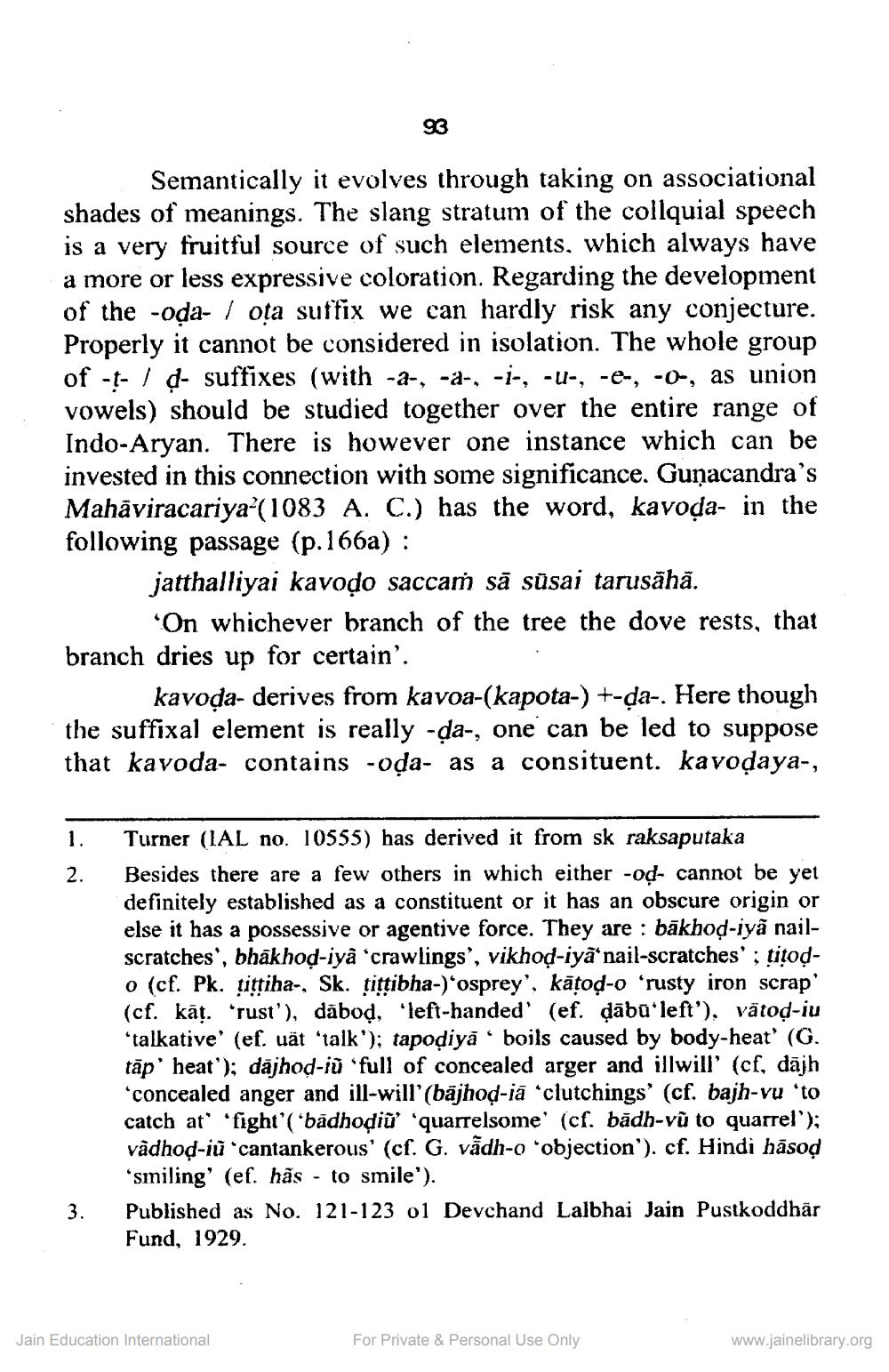________________
93
Semantically it evolves through taking on associational shades of meanings. The slang stratum of the collquial speech is a very fruitful source of such elements, which always have a more or less expressive coloration. Regarding the development of the -oda- / oța suffix we can hardly risk any conjecture. Properly it cannot be considered in isolation. The whole group of -£- 1 d. suffixes (with -a-, -à-, -i-, -U-, -e-, -o-, as union vowels) should be studied together over the entire range of Indo-Aryan. There is however one instance which can be invested in this connection with some significance. Gunacandra's Mahāviracariyao(1083 A. C.) has the word, kavoda- in the following passage (p. 166a) :
jatthalliyai kavoạo saccam sā sūsai tarusāhā.
'On whichever branch of the tree the dove rests, that branch dries up for certain'.
kavoda- derives from kavoa-(kapota-) +-da-. Here though the suffixal element is really -da-, one can be led to suppose that kavoda- contains -oda- as a consituent. kavodaya-,
1.
2
Turner (IAL no. 10555) has derived it from sk raksaputaka Besides there are a few others in which either -od- cannot be yet definitely established as a constituent or it has an obscure origin or else it has a possessive or agentive force. They are : bākhod-iyã nailscratches', bhākhod-iyà 'crawlings', vikhod-iyā* nail-scratches'; titodo (cf. Pk. țittiha-, Sk. tittibha-)'osprey', kātod-o frusty iron scrap' (cf. kāț rust'), dābod, 'left-handed' (ef. dābūleft')vätod-iu "talkative' (ef. uät talk'); tapodiya“ boils caused by body-heat' (G. tāp' heat'); dājhod-iù 'full of concealed arger and illwill' (cf, dājh 'concealed anger and ill-will'(bājhod-iā clutchings' (cf. bajh-vu 'to catch at 'fight'('bãdhoạiū 'quarrelsome' (cf. bădh-vũ to quarrel'); vadhod-iũ cantankerous” (cf. G. vẫdh-o objection”). cf. Hindi häsod 'smiling' (ef. hãs - to smile'). Published as No. 121-123 on Devchand Lalbhai Jain Pustkoddhār Fund, 1929.
3.
Jain Education International
For Private & Personal Use Only
www.jainelibrary.org




